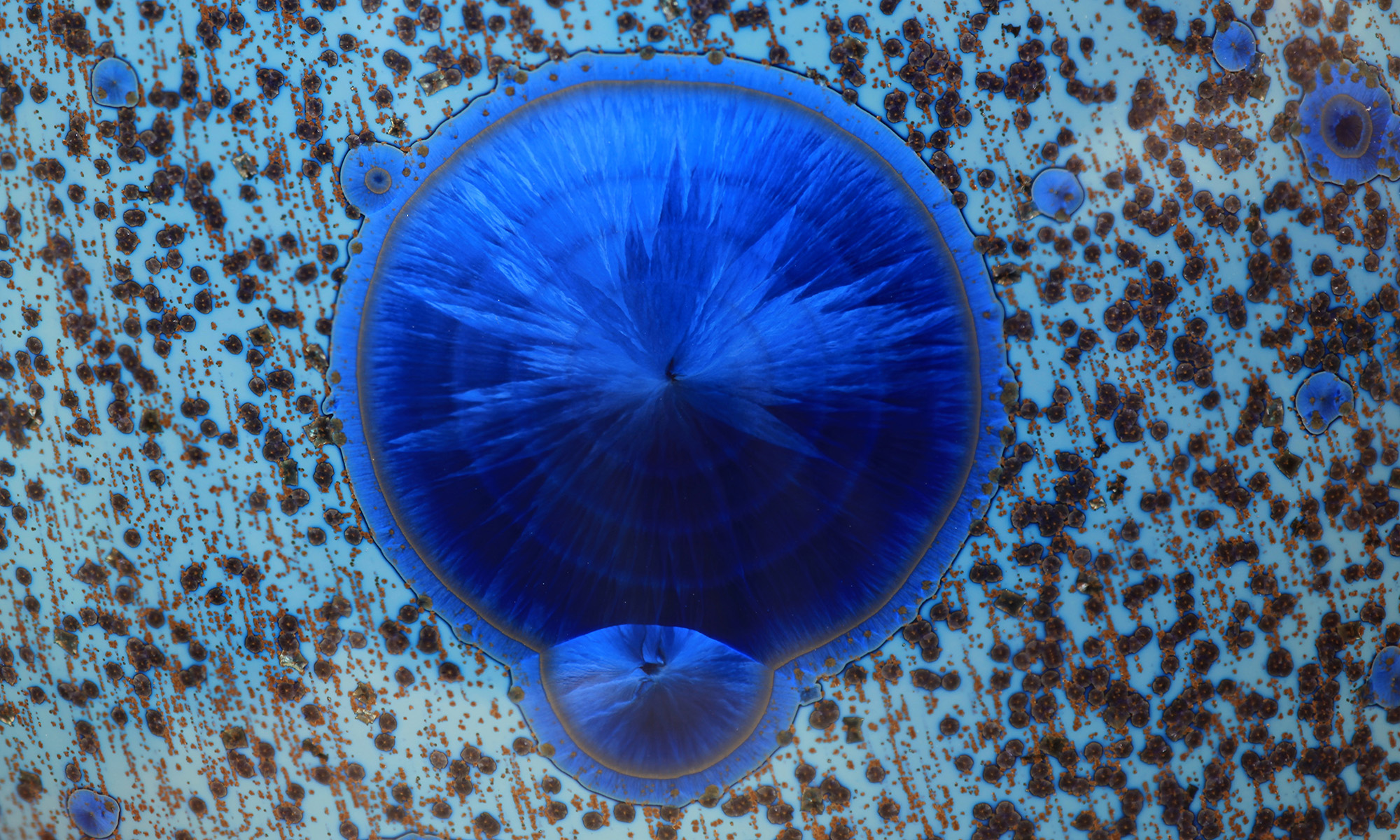The crystalline glaze derives its spectacular appearance from the presence of zinc silicate (Willemite) crystals within the glaze matrix. In a conventional glaze, crystals are often considered to be a flaw and steps are taken to ensure that they are either completely absent, or very small and not noticeable. Crystalline glazes are specially formulated to permit the growth of large crystals. The glaze recipe includes an unusually large proportion of zinc oxide, an unusually small amount of aluminium oxide together with a vigorous flux such as sodium or potassium oxide. A special kiln firing is required. Until the maximum temperature of between 1275°C (2327°F) and 1290°C (2354°F) the firing proceeds as it would for a conventional glaze. After this the temperature is allowed to fall rapidly to the region of 1050°C – 1120°C (1922°F – 2048°F). The temperature is held in this range for a number of hours to allow crystals to grow, the kiln is then allowed to cool normally. The oxides of cobalt, iron, nickel, manganese and copper provide colour in the glaze. The crystals absorb the colourant in different amounts to the background glaze matrix giving striking contrasts. The fascination in the glaze derives partially from its unpredictability; effects can be controlled to some extent but the same effect can never be reproduced exactly.
My Glazes
My first crystalline glaze was a recipe given to me by Derek Clarkson. The crystals I obtained from it were exciting and I quickly became engrossed in the process of testing new glazes and experimenting with different colours. This is something that potters using crystalline glazes have in common: the drive to experiment and discover new possibilities. There is no danger of exhausting the field. Considering the available variations in glaze chemistry, firing cycle and porcelain composition, to name but a few of the major influences, in a lifetime, a potter can only explore a tiny part of the whole.
I have now been developing these glazes for over 25 years and have tested well over 10,000 different compositions. My tastes have changed over time. In the early years, I was driven to produce large spectacular crystals with vivid colours without a great deal of consideration for the overall aesthetic of the interaction of glaze and form. That has changed, and I now find myself drawn to more subtle effects. My current interest is in glazes that have richly developed background of secondary crystals. These are drawn from nature: lichen on a dry stone wall, mossy boulders in a secluded river and glittering quartz crystal in a rugged gritstone outcrop, to name but some of my inspirations. I’m also very interested in glaze interactions and recently have developed pieces featuring several different glazes on the same piece.

